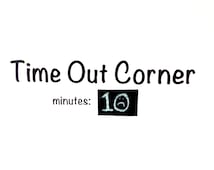

If the child does not stop the behavior immediately, take it that they need and have elected a time-out.He has managed to exercise self-control and a time-out is not needed. It is an acceptable choice when he chooses to stop the behavior and remain playing.“Would you like to go to the cozy corner with me to calm down or do you think you can stay here and not throw/scream/run off?” Then offer the choice to stop the behavior immediately or to take a time-out.“I see that you are throwing blocks at your brother.” Or “When you run around in the store screaming like this, it tells me that you are having trouble with self-control.” When you call for a time-out, begin by describing the problematic behavior.As the child becomes more adept at being comforted and self-comforting, the cozy corner becomes more of a concept than a particular place.

In it there should be comforting objects, such as stuffed animals, soft blankets, books to read or quiet activities. He should be encouraged to use it under his own initiative as well as at the parent’s direction.

Here are some tips for using positive time-outs with the different age groups of childhood. As the child gets older, time-out is both a reminder to the child to regain control over himself and a push to do so.
#Time out corner. how to#
When children are young the time-out both teaches them how to do this and gives them an opportunity to exercise those new skills. Positive time-outs are intended to interrupt problem behaviors and to help children calm down and gain self-control. My last post introduced positive time-out.


 0 kommentar(er)
0 kommentar(er)
